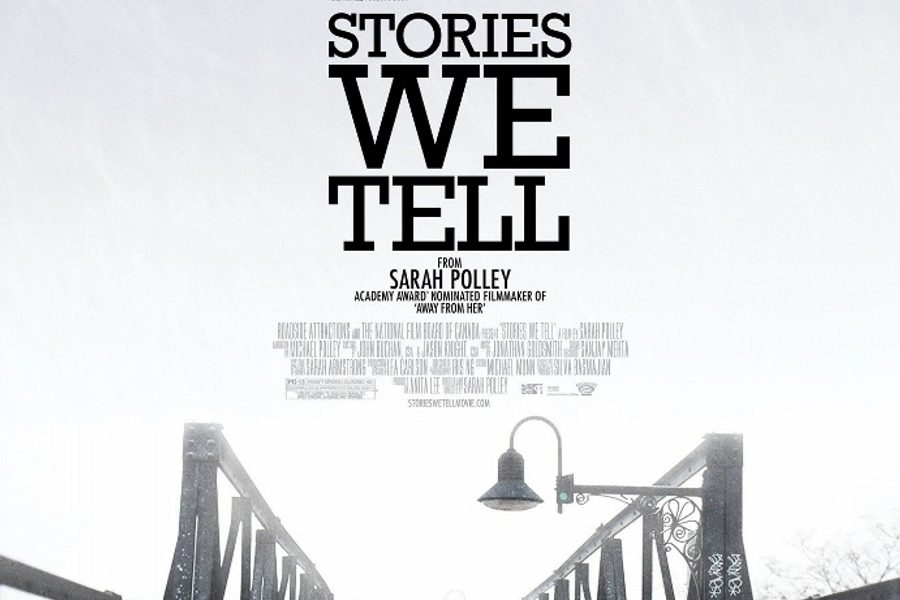
Sarah Polley’s new film, “Stories We Tell,” is a documentary about unraveling a family secret. At the age of 28, Polley learned that her mother’s husband, Michael, who had raised her from birth, was not her biological father. This was news to Michael, too. His wife, Diane, had gone to her grave without divulging the secret.
In an attempt to piece together her true origins, Polley interviews Michael, her older siblings and some of her mother’s friends and relations. The interviews are interspersed with Super 8 home movies from Polley’s childhood and recreations of pivotal moments in Diane’s life, also shot on Super 8.
Polley appears in the film, but not as an interview subject. She is present as interrogator and auteur, constructing the story of her birth from the memories of others. It’s refreshing to see a movie that depicts a young female director in cool creative control. Michael remarks that Sarah’s going to take all this interview footage and edit it to be whatever she wants it to be. We know he’s right.
A key premise of “Stories We Tell” is that its central character, Diane, is an impenetrable enigma. In voiceovers, Polley beats us over the head with the idea that this movie is about the unreliability of memory and the near impossibility of knowing the truth. Unfortunately, the epistemology doesn’t fit the story as Polley tells it.
For all Polley’s talk about uncertainty and subjectivity, the interview subjects paint a clear and consistent picture of who Diane was and where Sarah came from. By all accounts Diane was a larger-than-life extrovert married to a man who couldn’t meet her bottomless need for affection, sex and excitement. [SPOILER ALERT: PLOT SPOILERS FOLLOW.] Feeling bored and trapped, she went to Montreal in 1928 to act in a play and hooked up with Harry, a famous Canadian theater producer, with whom she conceived Sarah. The fling turned into a long-running affair with Harry, who gave Diane the adulation and excitement that was missing from her marriage. Diane hid the affair and the probable paternity of her youngest daughter from her entire family until her untimely death from cancer. Diane’s widower, her friends, her grown children, and her former lover all echo that basic narrative. In retrospect, it seems obvious to everyone that Diane cheated because Michael was an emotionally incompetent husband, including Michael. It’s rare to see a cheated-on husband and his wife’s ex-lover agree completely about why a marriage broke down.
Polley’s choice of home movies and her imagined scenes of Diane suggest that she shares the consensus about who her mother was and why she did what she did. The actress who plays Diane in the recreations bounds and flits her way through life with same frenetic good cheer as the Diane in the home movies. Occasionally we get glimpses, real and imagined, of Diane looking sad or listless. Polley keeps coming back to a home movie of Diane in a bathing suit, surrounded by children at the edge of the family pool, gazing off into the distance. Another recurring clip shows Michael floating alone and oblivious in the same pool. The juxtaposition reinforces the idea that Diane cheated because Michael was emotionally unavailable.
[SPOILER ALERT: ADDITIONAL PLOT SPOILERS FOLLOW.]
The final unravelling of Diane’s secret was decidedly unambiguous. Sarah found out who her real father was because he confessed over coffee when she came to quiz him about somebody else. There was still some lingering uncertainty because Michael came out from Ontario to visit Diane the same week she hooked up with Harry. Later on, a DNA test proves with over 99.9% certainty that Harry is Sarah’s biological father.
Harry, ever the producer, says bluntly that he wants Diane’s story told, but that he wants to control the narrative. He insists that the purpose of art is to tell the truth. Conveniently, as the only living participant in the affair, he believes that he alone knows the truth and the opinions of tangentially related parties are needless obfuscation. Harry wants the story to be about his transcendent romance with Diane and his joyous reunion with Sarah.
Instead of collaborating with Harry, Polley shares control of her story with the man who raised her. The main voiceover is written and read by Michael, a former actor and aspiring author. Michael says he always wanted to be a writer, but he could never think of anything to write about until he learned the truth about his youngest daughter and set out to tell the story. In several scenes, Polley coaxes the performance she wants out of Michael as he reads into a studio mic. Michael teases Sarah for being a brutal director, but he fondly recalls how she convinced him to back into a swimming pool fully clothed for an early film school project. Polley clearly loves both Michael and Harry, but she shares the telling of her story with the man who raised her, the man who submerged himself in a freezing pool to give her the perfect shot. Polley doesn’t talk much about her feelings, but her choice speaks volumes.

I hope you found this article important. Before you leave, I want to ask you to consider supporting our work with a donation. In These Times needs readers like you to help sustain our mission. We don’t depend on—or want—corporate advertising or deep-pocketed billionaires to fund our journalism. We’re supported by you, the reader, so we can focus on covering the issues that matter most to the progressive movement without fear or compromise.
Our work isn’t hidden behind a paywall because of people like you who support our journalism. We want to keep it that way. If you value the work we do and the movements we cover, please consider donating to In These Times.



